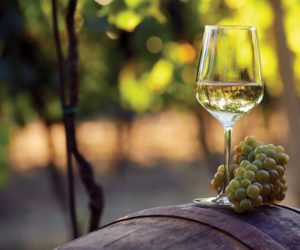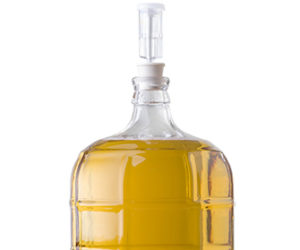
Q
A few years ago I toured some wineries on a trip through Michigan and found one that was quite unique. One of the methods of this winery was called “solera.” This method involved saving a specific amount of wine from the first year of production, then, in the second year, saving a similar amount, and blending the two together. Half of this wine is bottled and the other half is saved for the next year’s batch, continuing on in each successive year. This way, each year’s batch contains some wine from not only the first year of production but each subsequent year as well. Have you ever heard of this method before and can you tell me something else about it? Should I be doing something else? I’m trying it this year with a batch of wine I made last year from my own grapes.
Dave Vollmer
Eldorado, Wisconsin
A
The solera system of wine aging was developed by the Spanish and Portuguese as a way to provide wines of a constant average age, as well as to ensure a certain homogeneity of product over different vintages. The sherry and port producers of these two countries realized that their product was different than ordinary table wine, and needed a different aging system. While fans of fine Bordeaux and Burgundy table wines relished the vagaries that each vintage brought to the wines of those regions, consumers of ports and sherries came to want a certain “house style” of aroma, taste and quality every year. Therefore, instead of releasing all of a vintage into the marketplace once it was deemed “aged,” these aperitif dessert wines were shunted into a solera system of aging in order to produce a wine of consistent alcohol, sugar and flavor. As well, it is this extended barrel aging system that promotes a beneficial oxidation and imparts the unmistakable flavors of sherry wine.The solera system may seem complicated at first, but it really is an ingenious example of what the wine industry calls fractional blending. Here’s how it works: Barrels of wine of the same type but different vintage are stacked on top of each other, the oldest on the bottom, and the youngest on the top. Let’s say we’ve got eight rows of barrels representing eight vintages of wine. Each year, as the harvest season rolls around, anywhere from 10 percent to 30 percent of the bottom (the oldest) barrels’ volume will be drawn off to be bottled as that year’s product. The headspace created by this drawing-off will be filled with wine from the level above, and those barrels will be filled with the level above them, and onwards and upwards, while the last year’s barrels on the top level will be topped up with this harvest’s wine.Each year, as a limited amount of finished product is drawn off from the bottom level of barrels, the average age of the wine at the bottom barrels will continue to rise with the years until it reaches a constant average age. Our solera that is eight levels deep (if 25 percent is taken out of the oldest row for bottling each year) will produce wines that are an average age of 8 years old after 10 years of production.
So why would any winery, not to mention a home winemaker, want to do this? The answer is not so simple. Here are the advantages of using a solera-like system to age your wine:
- It produces a wine of a constant age after a certain period of operation, for example, after ten years. You won’t have to wait for your wines to age eight years to always enjoy wine that is an average of eight years old in the future.
- It produces wines of relatively consistent quality over the vagaries of vintage. If you have a particularly rough year one harvest, its lesser qualities will hopefully be balanced out over the eight levels of barrels.
That said, the solera system is not for everyone. Some of the disadvantages are:
- One infected barrel could spoil the whole lot. If you don’t have a scrupulous barrel-washing protocol, you could lose ten year’s work in the blink of a microbe.
- You need a lot of barrels. Even though you could work a solera system in five-gallon carboys, you’d still need a lot of carboys. Barrels or carboys, we all know that containers require some maintenance.
- It takes time. In order to draw off eight-year-old wine once a year, you’ve got to wait ten.
- It takes self-control. Perhaps this is the hardest part of the solera equation. In order to make the system work, you can only draw off a certain amount of wine each year. Draw off more and you could replace it by making a lot more this harvest — but all the time you’ve invested in maximizing the aging potential of each layer will be lost.
Each year you’ve got to make the same stuff. How many home winemakers do you know who make the same amount of the same wine every year? Even if you do know someone who professes a love for their obscure varietal of choice, it’s no guarantee that they’ll be able to obtain said varietal every year for the next couple of decades. You could make the system work by making similar wines, say, tannic, dry red wines from the classic Bordeaux varietals, every year and just hoping that the blend comes out okay — but then again, who wants to take chances with all of those barrels of wine?
The whole solera debate boils down to this: It will only work for you if you anticipate making roughly the same kind of wine year in and year out. You must have the grape availability, space and time to make it work. And the patience to wait that long to drink all that wine.
Q
I made homebrewed beer for a long time, but during the last couple of years I have gravitated more towards making wine and mead. I know that it’s safe to use a copper coiled immersion wort chiller when making beer, but I was wondering if it’s safe to use one in boiled or pasteurized mead, wine, and other improvised brews in which the acid level is much higher than beer. I’m wondering if there is any danger of leaching too much copper and making a toxic or bad-tasting kind of strange brew?
Rick Dingus
Lubbock, Texas
A
As I tend to think towards the experimental but also towards the cautious, let me answer your question with a warning, a suggestion, and a reality check. First, the warning: As copper is one of the more toxic heavy metals (along with lead, mercury and cadmium) that exist, it’s nothing to be trifled with. The BATF, along with other world-wide regulation boards, limits the amount of copper found in commercial wines to less than 0.5 mg/L.Copper residue (some say as little as 0.3 mg/L) can cause an instability in finished wines that manifests itself initially as a whitish haze and later as a red-brown precipitate that will show up in the bottom of corked bottles. Along with downright ugliness, copper that exceeds 1 mg/L can sometimes be sensorially detected, detracting from the aroma of the wine. At levels above 9 mg/L, the metal ions can become toxic to yeast, inhibiting alcoholic fermentation, and might also begin to be toxic to folks like you and me.My suggestion: Treat your copper tools (and the amount of copper that they may leach into your wine) with respect. Since you have absolutely no way of controlling how much copper is actually getting into your wine, it’s best to be cautious. As the Wine Wizard cannot recommend to our readers practices that might be potentially dangerous, I’m going to steer you away from using your brewing wort-chiller for winemaking. The higher acid level of juice and the higher alcohol content of any wines you might be cooling would certainly cause more copper to come out of solution than would be leached into your typical wort.
And here’s the reality check: People do use copper for various reasons in winemaking. The 0.5 mg/L deemed acceptable by the BATF can come from a variety of sources. Some vineyards employ sprays that contain copper — it’s toxic to fungi and microbes and therefore seems (unfortunately) to be a good idea to some viticulturalists. If the spray is applied too close to picking, exceedingly high levels may appear in the resulting wines. In Bordeaux, egg whites used for fining are still hand-whisked in copper bowls. Some commercial wineries also have a small number of bronze winery fittings (such as hose connectors, catch basins, etc.) that feed a small amount of copper into their wines in hopes of heading off a hydrogen sulfide or mercaptan spoilage scenario. During fermentation, sometimes yeast can produce these stinky sulfurous compounds that can make a wine objectionable.
Direct contact with copper-containing metal objects or direct addition of copper-containing agents (like cupric sulfate) will change the chemical make-up of the stinky sulfur-containing compounds to make them less offensive. Addition of 4 g of cupric sulfate per 1,000 gallons of wine will raise the copper content by 0.2 mg/L (as ionic copper). Before cupric sulfate was commercially available to winemakers, vintners used the “direct contact” method for hundreds of years with varying degrees of success.
Exposing your wine to copper fittings (or copper cooling coils) may cause stinkiness, but it’s difficult to tell how much contact time is needed— or how much contact time is too much. This is the other side of the reality check. Since you can never really know how much copper is being leached into your wine, it’s wise to come up with another safer and more predictable way to cool your juices and wine.
Do you have a burning question for the mighty Wine Wizard? If so, e-mail: [email protected].






